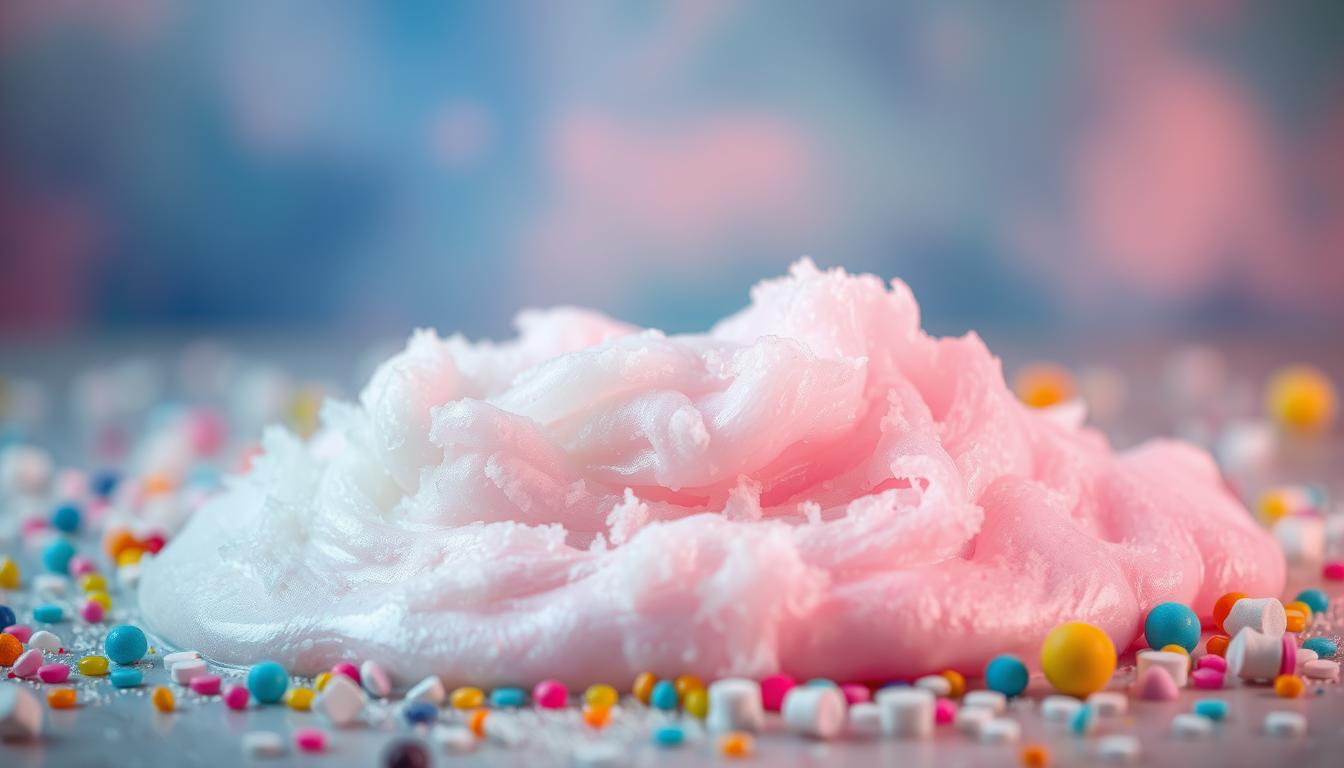Recent CDC data shows over 34% of caregivers actively avoid traditional play materials due to safety concerns. This growing demand for child-friendly alternatives has sparked creativity in kitchens nationwide. Using simple pantry staples, families are transforming ordinary ingredients into safe, engaging experiences that satisfy young explorers’ curiosity.
Marshmallow-based sensory putty offers unique advantages compared to conventional options. When heated, these puffy treats undergo molecular changes that create ideal stretchiness. The result? A pliable substance that’s accidentally ingestible yet still provides hours of tactile stimulation.
Developmental experts emphasize the importance of texture exploration for cognitive growth. Activities involving squishy materials help children build neural connections while fostering creativity. This guide reveals how to balance safety with sensory enrichment using methods approved by occupational therapists.
Key Takeaways
- Create child-safe putty using heat-activated marshmallows and common kitchen ingredients
- Understand the science behind texture transformation during preparation
- Support multiple developmental areas through tactile play experiences
- Implement crucial safety measures when handling hot mixtures
- Choose mouth-safe alternatives over traditional chemical-based recipes
Introduction
Parents often face a dilemma when choosing play materials for curious toddlers. While 73% of early educators recommend texture exploration, standard recipes frequently contain non-food components. This gap between developmental needs and safety concerns led to innovative kitchen solutions.
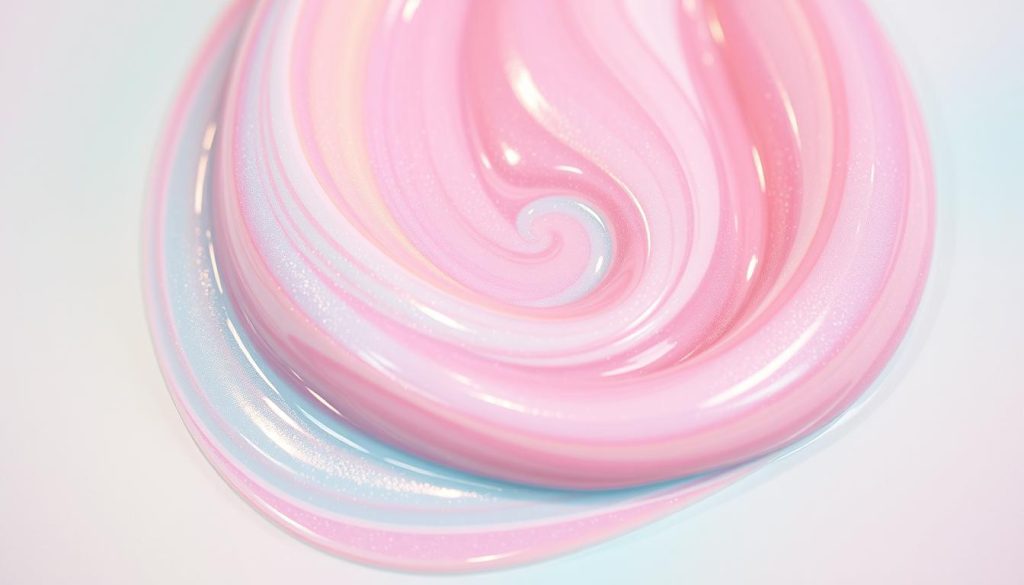
Understanding Safe Texture Exploration
True food-grade creations differ from “taste-safe” versions. While both avoid harmful chemicals, edible versions use entirely digestible ingredients. Traditional recipes might include borax or detergents – substances you’d never find in a snack.
Occupational therapist Dr. Lena Morris notes: “When little hands squeeze and stretch safe materials, they build nerve connections while satisfying oral curiosity.” This dual benefit makes edible options ideal for children under four.
Developmental Superpowers Through Play
Manipulating stretchy substances strengthens three key areas:
- Motor skills: Pinching and rolling actions develop finger muscles
- Sensory processing: Different textures help brains interpret touch signals
- Creative thinking: Molding shapes encourages problem-solving
These activities also teach cause-and-effect relationships. When a child pulls slowly versus quickly, they observe different results – early physics lessons disguised as fun.
What You Need to Get Started
Gathering the right components ensures both safety and fun during playtime. Proper preparation helps achieve the ideal stretchy texture while minimizing risks. Let’s break down everything required for success.
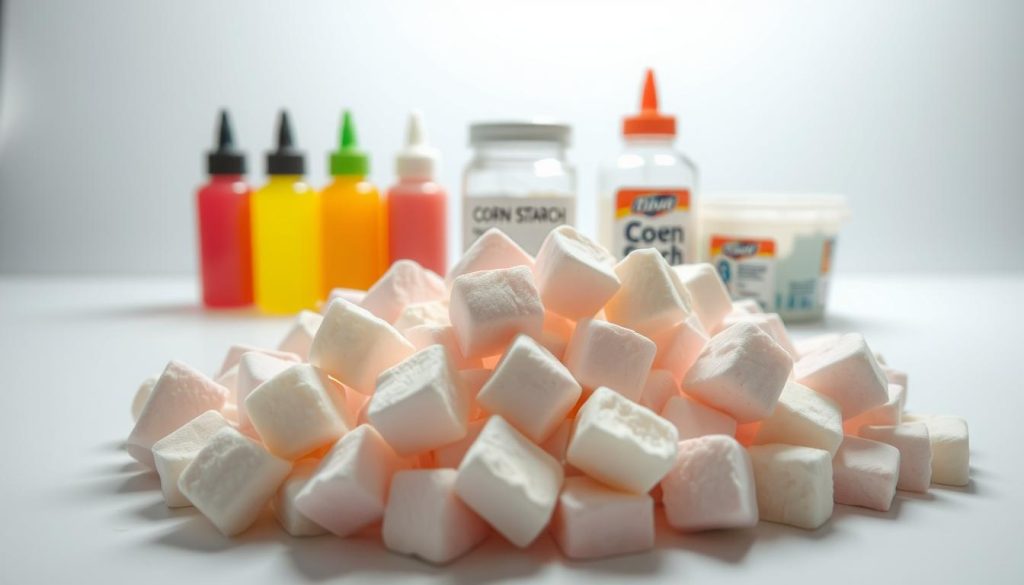
Ingredients List and Measurements
The basic formula requires three kitchen staples:
- 6 jumbo marshmallows – Their larger size creates better elasticity
- 1 tablespoon cooking oil – Coconut oil works best for neutral color
- ½-1 tablespoon cornstarch – Adjust for desired thickness
For colorful variations, try this rainbow adaptation:
| Component | Basic Recipe | Rainbow Version |
|---|---|---|
| Marshmallows | 6 jumbo | 36 large |
| Oil | 1 tbsp | ⅓ cup coconut |
| Cornstarch | ½-1 tbsp | ⅓ cup |
| Extras | – | Food coloring |
Essential Tools and Safety Guidelines
You’ll need a microwave-safe bowl, rubber spatula, and measuring spoons. Always heat components in 15-second intervals to prevent scorching. Adult assistance is non-negotiable – melted marshmallows can reach 160°F and cause serious burns.
Choose fresh ingredients for optimal results. Older marshmallows may crystallize, creating grainy textures. Coconut oil’s neutral flavor won’t compete with other additives if you later experiment with extracts.
Make Edible Slime with Marshmallows: Step-by-Step Guide
Crafting safe sensory materials requires precision and patience. Follow these sequential stages to transform simple ingredients into stretchy fun while maintaining optimal safety standards.
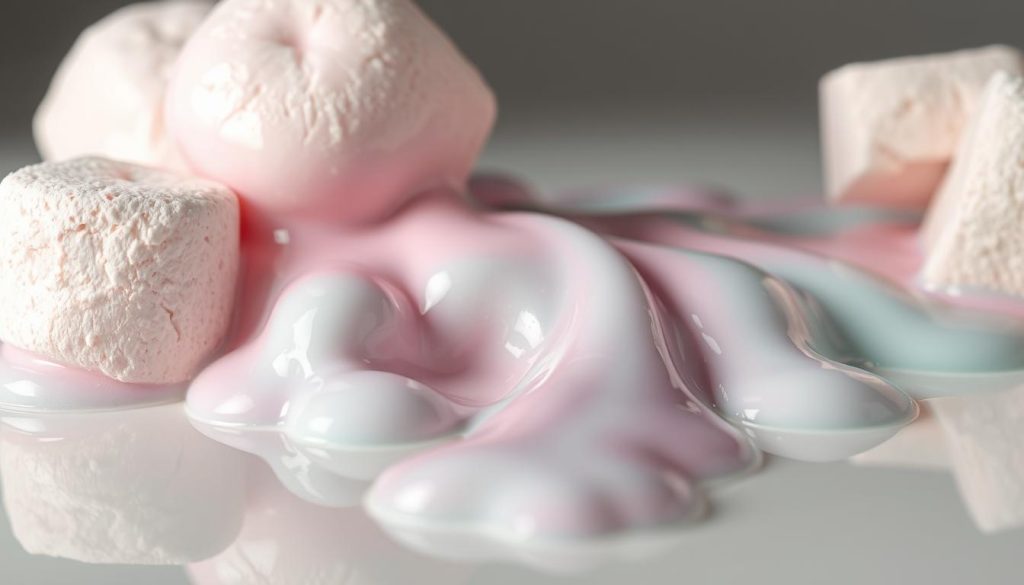
Melting the Marshmallows and Adding Oil
Combine six jumbo marshmallows with one tablespoon of oil in a microwave-safe bowl. The oil prevents sticking and ensures smooth texture development. Heat the mixture for 30 seconds in a 1200-watt microwave, pausing to stir if your appliance has lower power.
Incorporating Cornstarch for Texture
Immediately add ½ tablespoon of cornstarch to the melted base. Stir vigorously until the powder fully absorbs the sticky liquid. Pro tip: Use a rubber spatula to scrape bowl edges for uniform consistency.
Kneading and Adjusting Consistency
Wait five minutes for the substance to cool before handling. Press and fold the dough-like material with clean hands. Add cornstarch in small increments if you prefer firmer putty – each teaspoon changes the stretch factor noticeably.
Observe how the mixture responds to different manipulations. A slightly tacky surface indicates ideal play readiness, while excessive stickiness means needing more thickening agent. Store unused portions in airtight containers for up to three days.
Tips, Tricks, and Troubleshooting
Even the best recipes can hit snags. These solutions help you fix texture issues quickly while maintaining safety standards. Master these adjustments to create the perfect sensory experience every time.
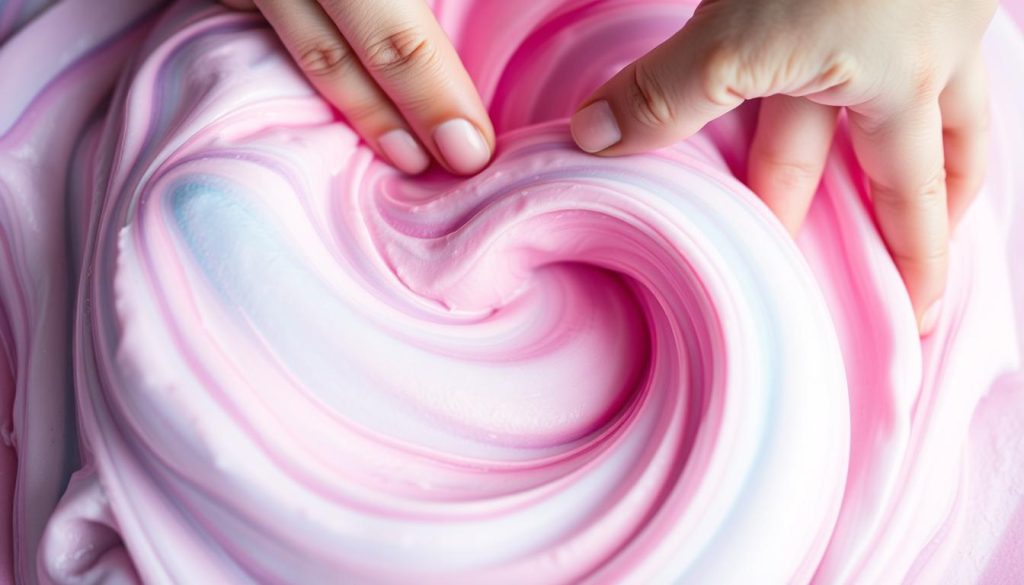
Preventing Overcooking or Lumps
Lumpy textures often signal overheated marshmallows. Stop microwaving when the mixture becomes stirrable – not completely liquid. Use 10-second bursts during the final heating phase to avoid crystallization.
If you spot small clumps, knead the slime while warm. The residual heat helps dissolve stubborn bits. For severe cases, mix in ½ teaspoon of coconut oil to soften hardened sections.
Making Adjustments for Desired Thickness
Sticky residue on hands means your mixture needs more cornstarch. Sprinkle ¼ teaspoon at a time, folding it in thoroughly. Let the slime rest for two minutes between additions to gauge texture changes.
For stiff or crumbly results, warm the slime briefly between your palms. Work in drops of oil until it reaches the desired stretchiness. Pro tip: Rub a small amount of coconut oil on your hands before handling to prevent sticking.
Variations and Creative Sensory Play Ideas
Transform ordinary playtime into a colorful adventure with customizable sensory materials. These adaptations boost engagement while supporting developmental milestones through visual and tactile stimulation.
Adding Food Coloring and Flavor Enhancements
Vibrant hues turn basic recipes into eye-catching creations. Stir 2-3 drops of food coloring into warm mixtures for even distribution. For rainbow versions, prepare six small batches using primary colors, then layer them in spectral order. They’ll bond naturally when pressed together.
Pre-colored marshmallows offer a stain-free alternative. Look for brands using vegetable-based dyes. Some families add vanilla or peppermint extract for aromatic surprises – just ¼ teaspoon enhances sensory exploration.
Fun Activities and Ideas for Kids
Boost learning through guided play scenarios:
- Stretch challenges: Measure how far children can pull the material before it breaks
- Color mixing: Combine two hues to discover secondary shades
- Texture hunts: Hide small safe objects inside for tactile discovery
These activities build color recognition and scientific thinking. Store different colored batches separately to maintain vibrancy. Rotate textures weekly to sustain curiosity – try adding edible glitter or crushed cereal for crunch.
Conclusion
In today’s kitchens, everyday ingredients unlock new possibilities for child development. You’ve mastered creating marshmallow slime recipes that balance tactile fun with safety. These edible versions provide temporary entertainment – their stretchy texture naturally firms as molecules cool, unlike chemical-based alternatives.
Store creations in airtight containers and revive stiffness with 10-second microwave bursts. While this sensory material won’t last overnight, its reusable nature extends play value. Remember: troubleshooting sticky batches requires gradual cornstarch additions, while stiff mixtures benefit from quick oil kneading.
This guide transforms basic components like coconut oil and starch into powerful learning tools. Young explorers strengthen motor skills through molding while caregivers enjoy peace of mind. Keep experimenting with colors and textures – each batch offers fresh opportunities for growth-filled play.
